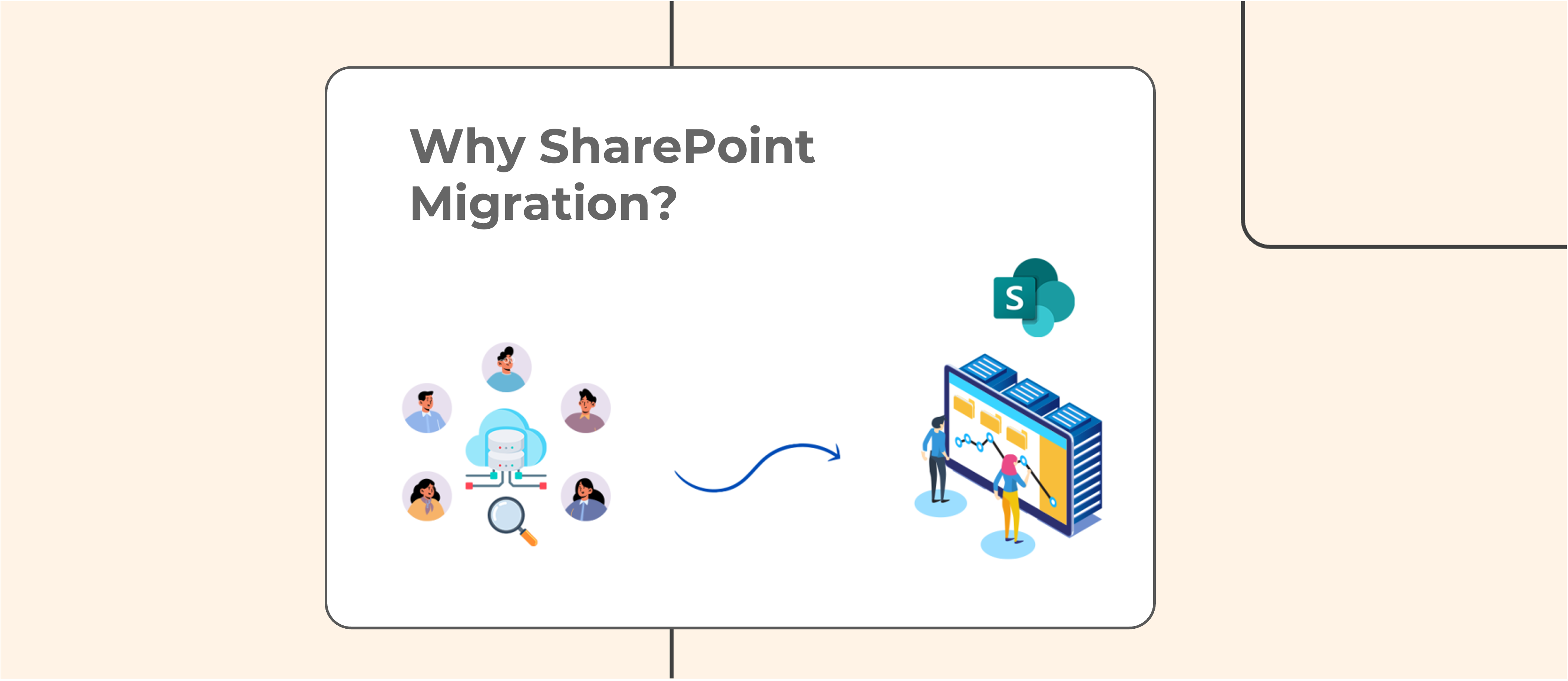In today’s fast-evolving business landscape, SharePoint Migration has become a crucial step for organizations looking to enhance their productivity, collaboration, and content management. Whether you’re moving from an older SharePoint version, on-premise server, or another storage platform like Google Drive or Box, migrating to SharePoint or Microsoft 365 ensures your business stays competitive.
This process not only allows for better document management but also enables seamless collaboration, improved security, and access to the latest tools and features that boost efficiency. Let’s explore why SharePoint migration is essential for your business success and the best practices for ensuring a smooth transition.
What is SharePoint Migration?
The process of SharePoint migration refers to making existing content accessible in Microsoft SharePoint or Microsoft 365 (formerly Office 365). Generally, this involves copying or migrating content from a source environment – such as file shares, SharePoint Server, Box, or Google Drive – to any version of SharePoint or SharePoint Online.
Why to do SharePoint Migration?
Different versions of SharePoint are used for various purposes in enterprises, such as document management, web content management, team collaboration, knowledge bases, business reporting, task management, and more. This is why it has become a platform of choice for collaborative work in enterprises throughout the world.
You will need the right SharePoint version and implementation to achieve optimal results, streamline operations, and achieve superior results. You should consider moving to the latest version if you don’t have it or are using the old version.
There are a number of questions that may bother you:
- Why do I need to migrate?
- What is the best version for my enterprise?
- Yes, but how do I migrate?
- Who will guide me through this process?
These are the kind of questions you might be thinking right now. Let’s go through step-by-step SharePoint migration best practices to answer these questions and many more.
Why do you need to migrate?
Microsoft SharePoint is used by most enterprises in some way which has led to SharePoint’s growth over the coming decade. As a result, Microsoft also focuses on advancing its SharePoint products and technologies through various versions.
Due to the enhancements in the SharePoint release cycle, enterprises are required to upgrade to the latest version, mainly because microsoft offers:
- 9% service-level–agreement reliability
- Top-notch security features
- Tools for effective collaboration
- Scope of customization
- Unique search options
Moreover, some of you need to migrate your SharePoint apps or websites to create a unified SharePoint farm. For your current SharePoint environment to be more effective, it must be upgraded.
As soon as you have made your decision, it’s time to move on to the next step.
How do you determine the version to upgrade to?
The first thing to do is compare! Examine the current version against the new version. Identify how you will migrate the content from your on-premise SharePoint to the advanced version.
Finally, realize that migrations bring your business far more than just incorporating new features. There is a whole package of tools that come together to boost your team’s productivity and collaboration.
Migrating to the latest SharePoint version is a great opportunity to enhance your business processes, overall performance, and employee productivity.
You can consider migrating to the following versions:
- SharePoint 2007 to 2010
- SharePoint 2010 to SharePoint 2013
- SharePoint 2013 to SharePoint 2016
- SharePoint 2016 to SharePoint 2019
- Current sharepoint on-premise version to SharePoint Online or Any other On-Premise Server
What are SharePoint Online Migration Best Practices?
- Avoid long URLs. URLs that exceed the maximum length are difficult to maintain. Short and logical names are required.
- When migration is in progress, you should not make updates either at the source or at the destination. During migration, source and destination may not remain the same, disrupting the whole flow.
- You should avoid maintaining large lists and libraries since this may cause list view threshold issues, such as rendering failing if the level has over 5000 items in it. Instead, split the data into multiple lists, which will help you to retrieve the data faster.
- Implement pre- and post-migration checking practices, ensuring that the content is fit to migrate and making sure that the migrated content is as original.
- Check whether users are available at the destination. Unavailable users at the destination result in incorrect authors and editors being preserved. There can be mappings for users and groups when there are orphans/dead accounts.
- Subsites are better maintained as flat structures rather than nested structures. Keeping subsites as a site collection helps you maintain an individual structure, allows you to handle permissions individually, and solves issues with URLs exceeding maximum limits, improving the usability of site collections.
In addition to its robust collaboration features, SharePoint Workflow is a powerful tool that automates many business processes, streamlining tasks such as document approvals, status tracking, and notifications. These workflows can significantly improve productivity by reducing manual intervention in repetitive tasks, helping businesses operate more efficiently. For a detailed look at the types and benefits of SharePoint Workflows, check out our blog post SharePoint Workflow, where we explore how these workflows enhance business operations and simplify work processes.
Zelite’s Microsoft SharePoint Services
Zelite Solutions offers comprehensive Microsoft SharePoint services designed to help businesses maximize the potential of their SharePoint environment. Whether you are migrating from an on-premise server to SharePoint Online, upgrading to the latest version, or implementing SharePoint for the first time, Zelite ensures a seamless transition.
Our team of experts provides end-to-end support, including strategy, migration, customization, and post-migration optimization, tailored to your business needs. With a focus on enhancing collaboration, streamlining document management, and boosting overall efficiency, Zelite’s SharePoint service empower businesses to stay ahead in today’s digital landscape.




